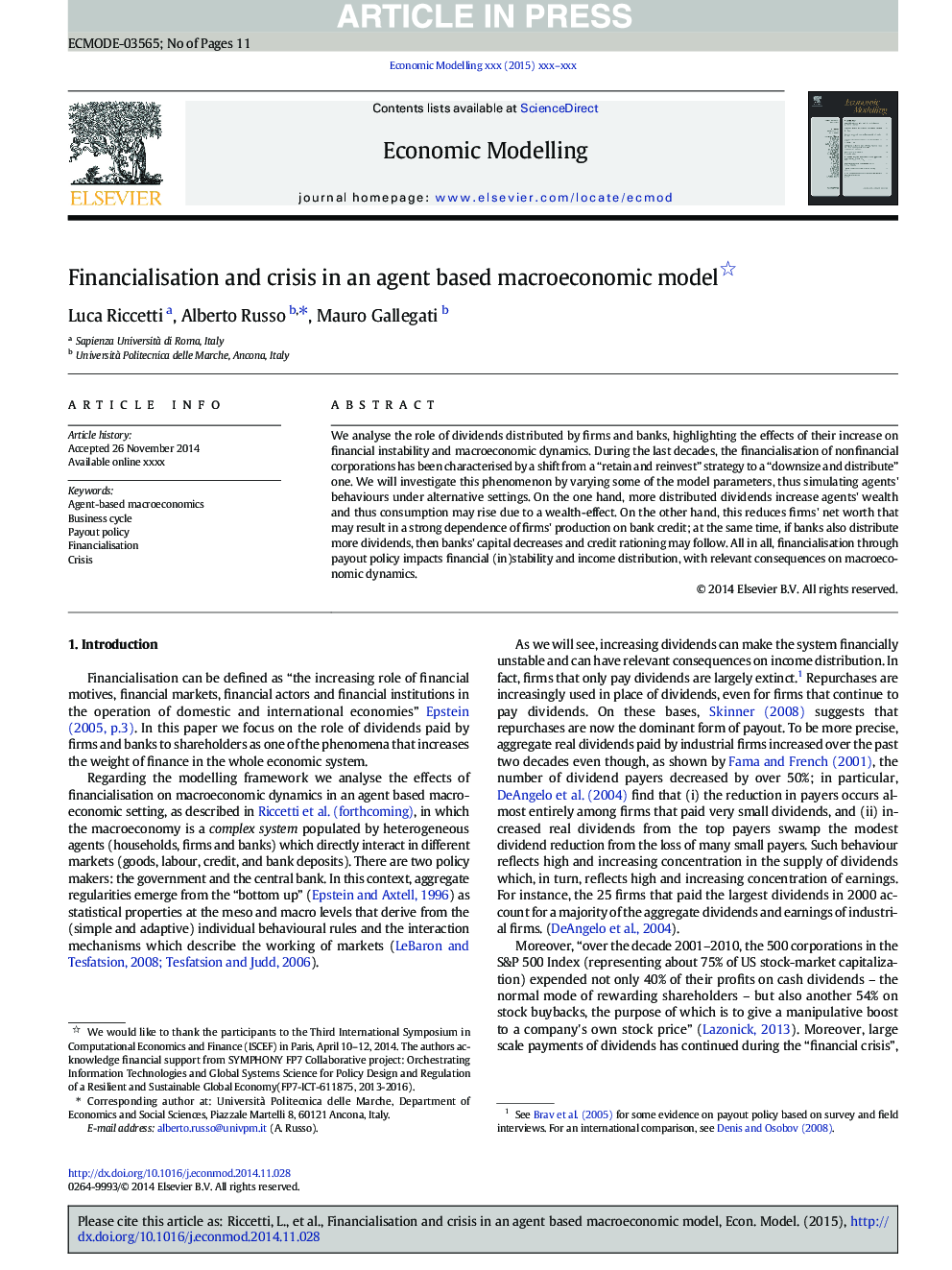| Article ID | Journal | Published Year | Pages | File Type |
|---|---|---|---|---|
| 5053532 | Economic Modelling | 2016 | 11 Pages |
Abstract
We analyse the role of dividends distributed by firms and banks, highlighting the effects of their increase on financial instability and macroeconomic dynamics. During the last decades, the financialisation of nonfinancial corporations has been characterised by a shift from a “retain and reinvest” strategy to a “downsize and distribute” one. We will investigate this phenomenon by varying some of the model parameters, thus simulating agents' behaviours under alternative settings. On the one hand, more distributed dividends increase agents' wealth and thus consumption may rise due to a wealth-effect. On the other hand, this reduces firms' net worth that may result in a strong dependence of firms' production on bank credit; at the same time, if banks also distribute more dividends, then banks' capital decreases and credit rationing may follow. All in all, financialisation through payout policy impacts financial (in)stability and income distribution, with relevant consequences on macroeconomic dynamics.
Related Topics
Social Sciences and Humanities
Economics, Econometrics and Finance
Economics and Econometrics
Authors
Luca Riccetti, Alberto Russo, Mauro Gallegati,
